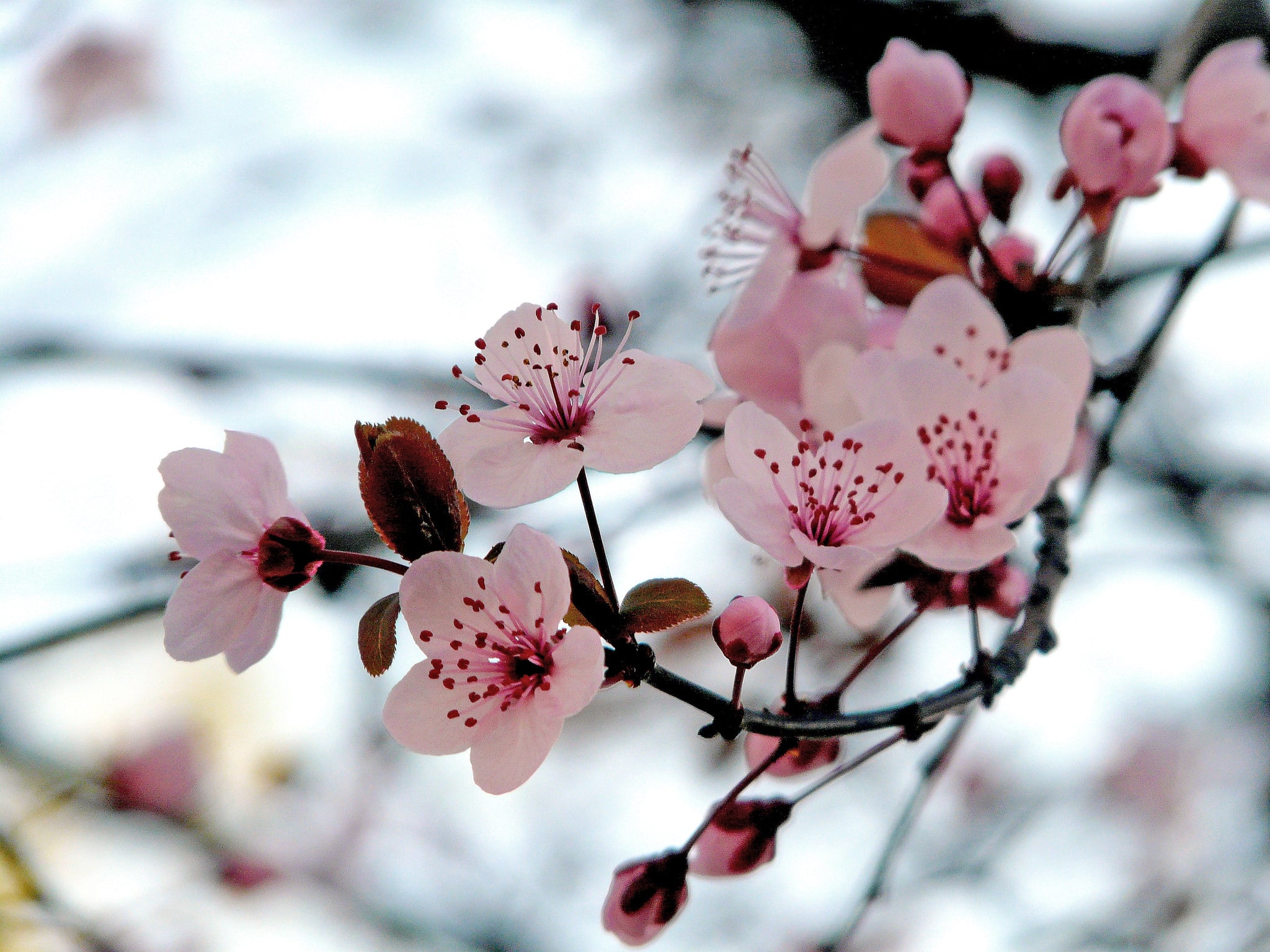
Image - Flickr / Salomé Bielsa
What are the most beautiful flowers in the world? That is a question that does not have a single answer. Each of us has our own tastes, so it is impossible to make a list that we all like. Now, if you want to know which ones we recommend to brighten up gardens, balconies, or terraces, then don't hesitate to take a look at the images while we talk a little about them.
The plants that produce them are many and varied, so much so that you will see that some are herbaceous, others climbers, and there are even some that are trees; this way, you will know where to place them when you want to include them in your collection. Discover more.
Columbine
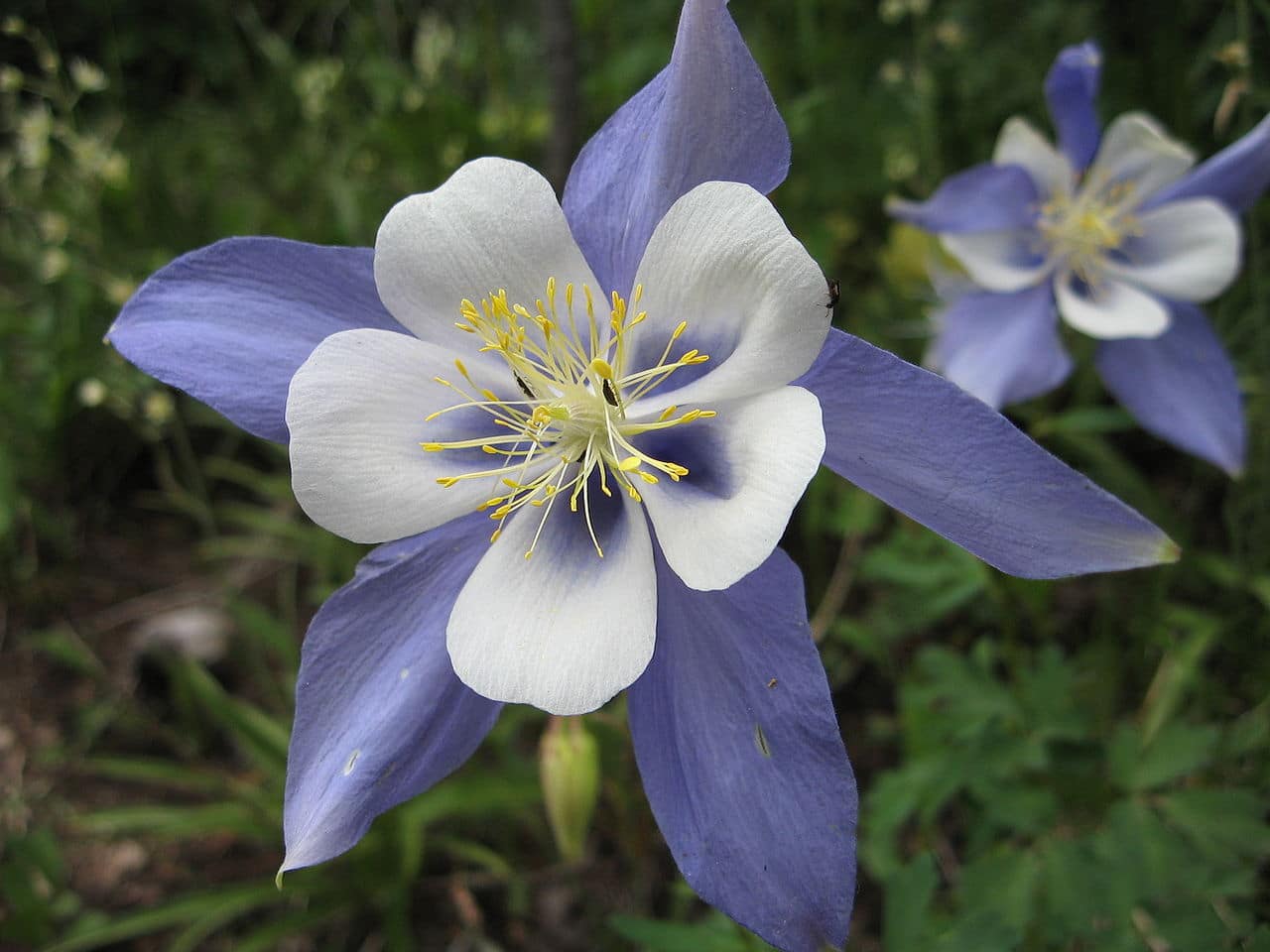
The columbine is a perennial herbaceous plant whose scientific name is Aquilegia caerulea. It grows between 20 and 60 centimeters in height, and its flowers bloom in spring. The colors vary a lot, being able to be pale blue to white, going through yellow and pink. It is usual for them to be bicolor.
In cultivation it is very grateful; what's more, putting it in full sun and watering it from time to time will be fine. In addition, it resists cold and frost without problems.
Cane fistula
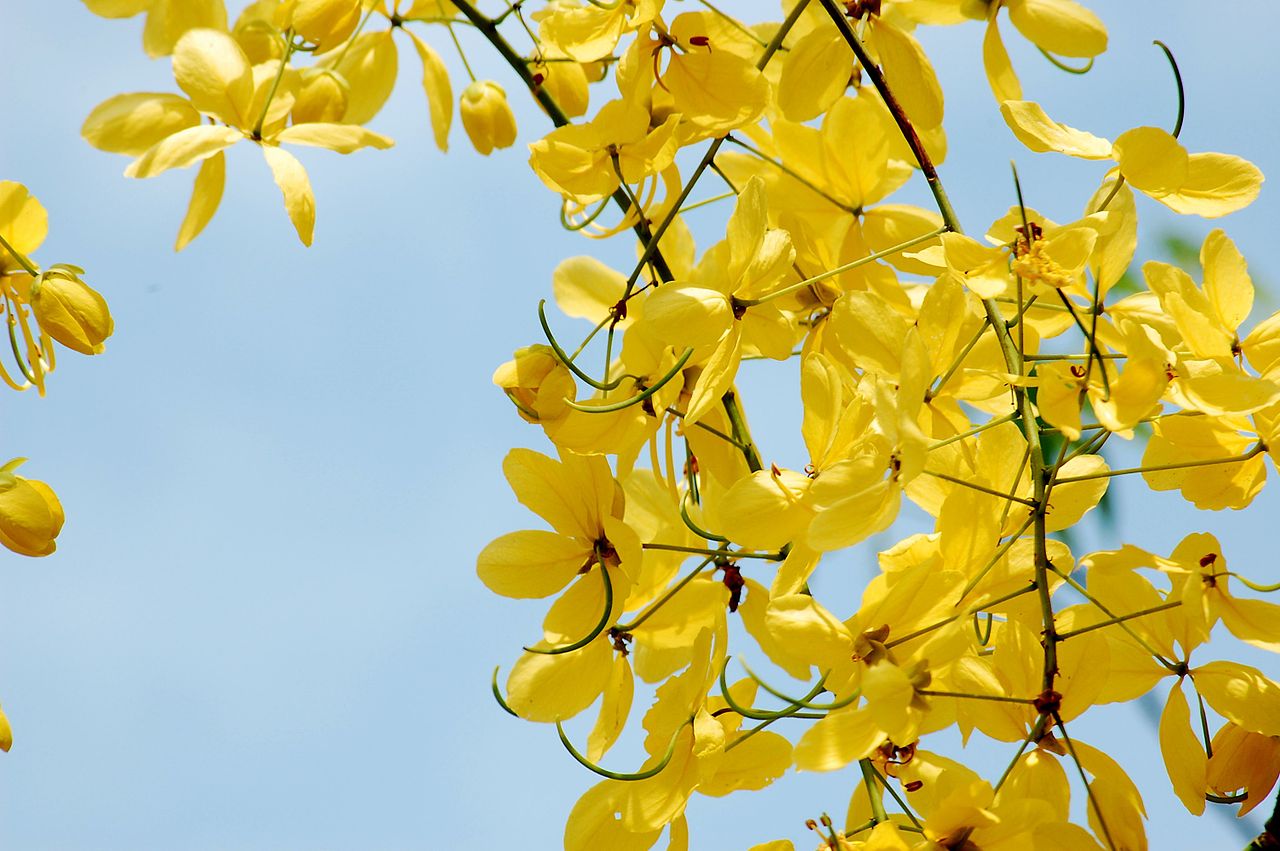
Image - Wikimedia / Challiyil Eswaramangalath Vipin from Chalakudy, India
Cane fistula, also known as golden shower, is a deciduous tree whose scientific name is Cassia fistula. It grows between 6 and 20 meters in height, produces yellow flowers grouped in hanging inflorescences 30-80 centimeters long. Blooms in spring.
It requires sun, soils rich in organic matter and with good drainage. Irrigation will be moderate, frequent in summer. It resists weak frosts down to -2ºC, but it is better not to drop below 0 degrees.
Japanese cherry
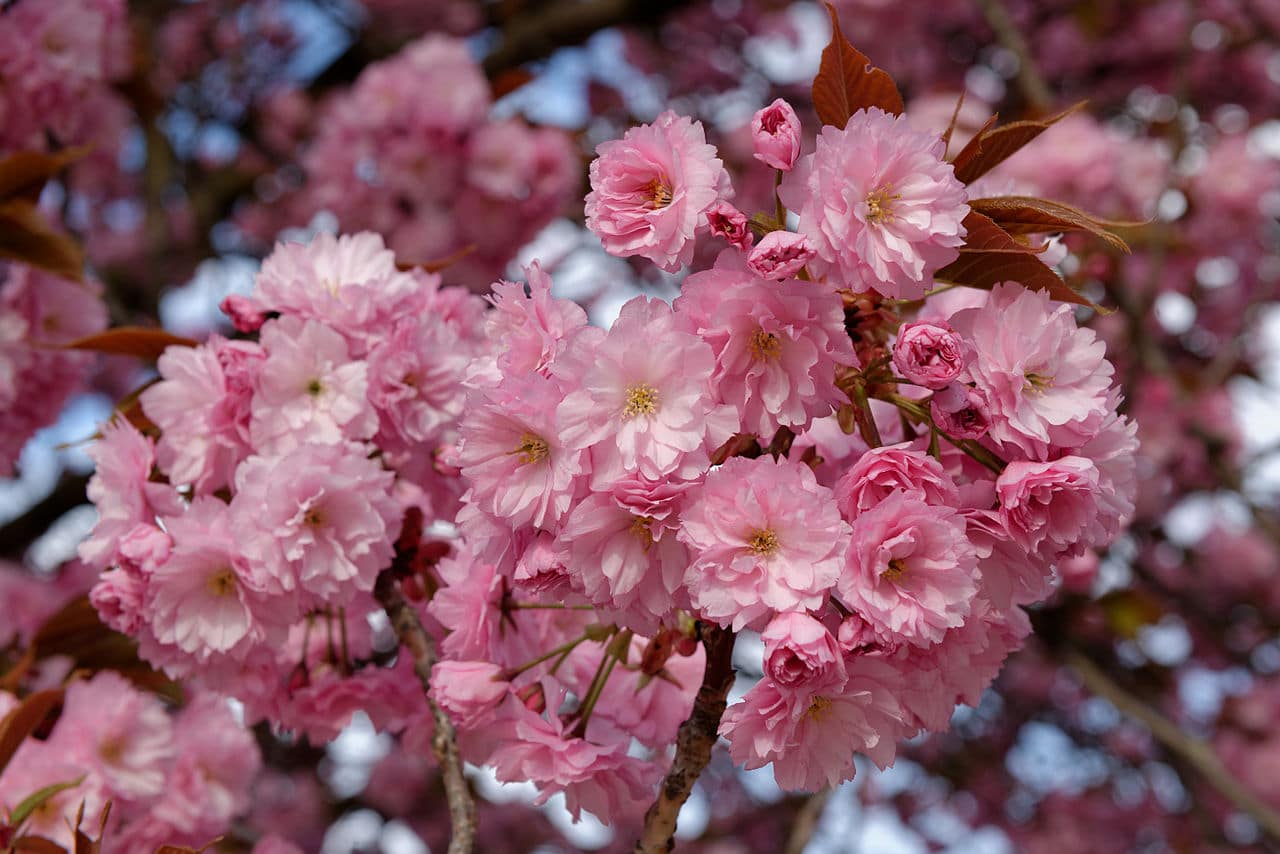
Image - Wikimedia / Marie-Lan Nguyen
The Japanese cherry tree, also called sakura or flowering cherry, is a deciduous tree whose scientific name is Prunus serrulata. It can reach 5-6 meters, with a straight trunk and a wide crown. Its flowers appear in early spring, and they are pinkish-purple.
It grows in sunny exposures, in neutral or alkaline soils with good drainage. It does not resist drought, but it does resist frosts down to -17ºC.
Bleeding heart
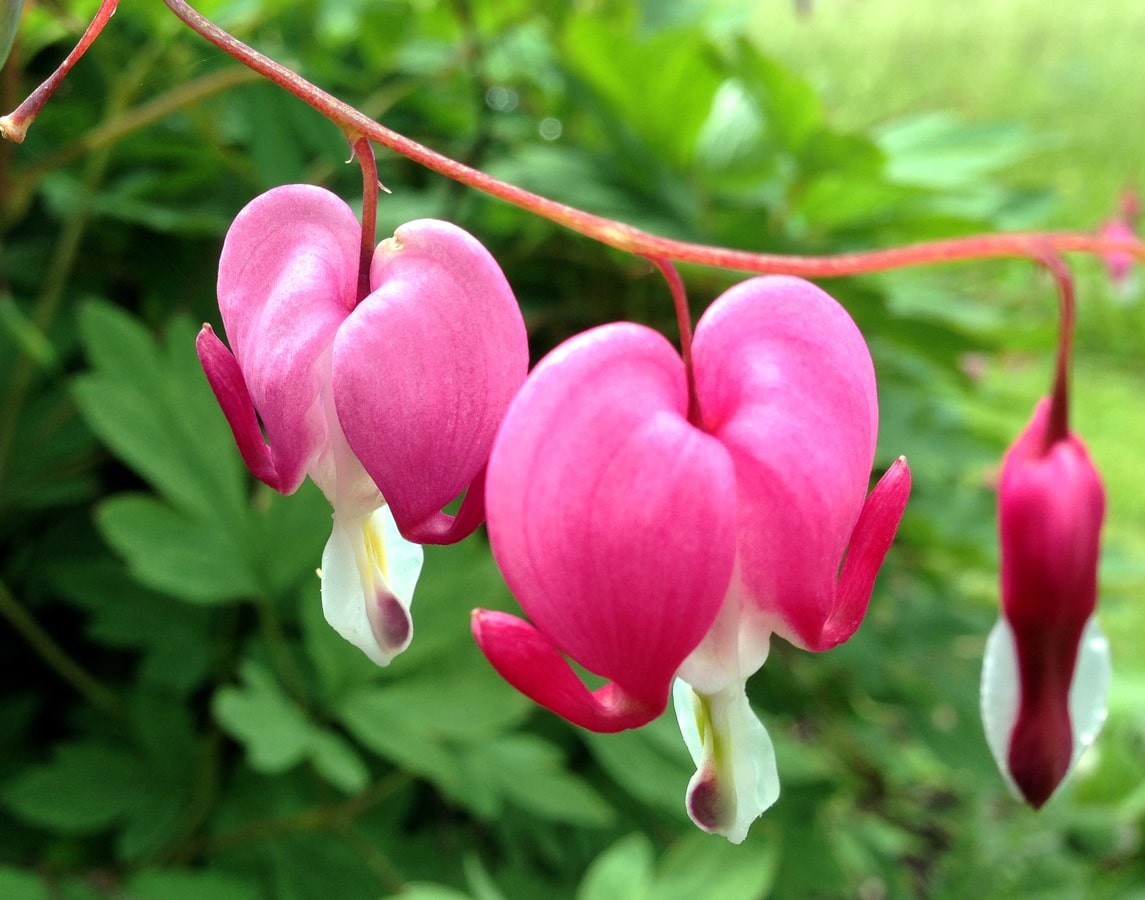
The plant called bleeding heart is a perennial rhizomatous whose scientific name is Lamprocapnos spectabilis. It can reach a height of 0,9 meters, producing pink or white heart-shaped flowers of 3 to 5 centimeters. These sprout from late spring to early summer.
In cultivation it is somewhat delicate. If the climate is hot and dry, it should be kept in semi-shade, but if it is wetter and cooler, it can be kept in the sun. It requires moderate watering, avoiding excesses, as well as a substrate or soil that drains the water well. Bear the cold.
Echinacea

Image - Wikimedia / Arto Alanenpää
Echinacea is a perennial herbaceous plant whose scientific name is Echinacea purpurea. It grows up to one meter in height, and its flowers are very showy, pink, purple, white or red. They appear from early summer to fall.
It is a plant that loves the sun, as well as fertile and well-drained soils. Water it from time to time and, if there is frost in your area, do not worry as it resists up to -7ºC.
Chocolate flower
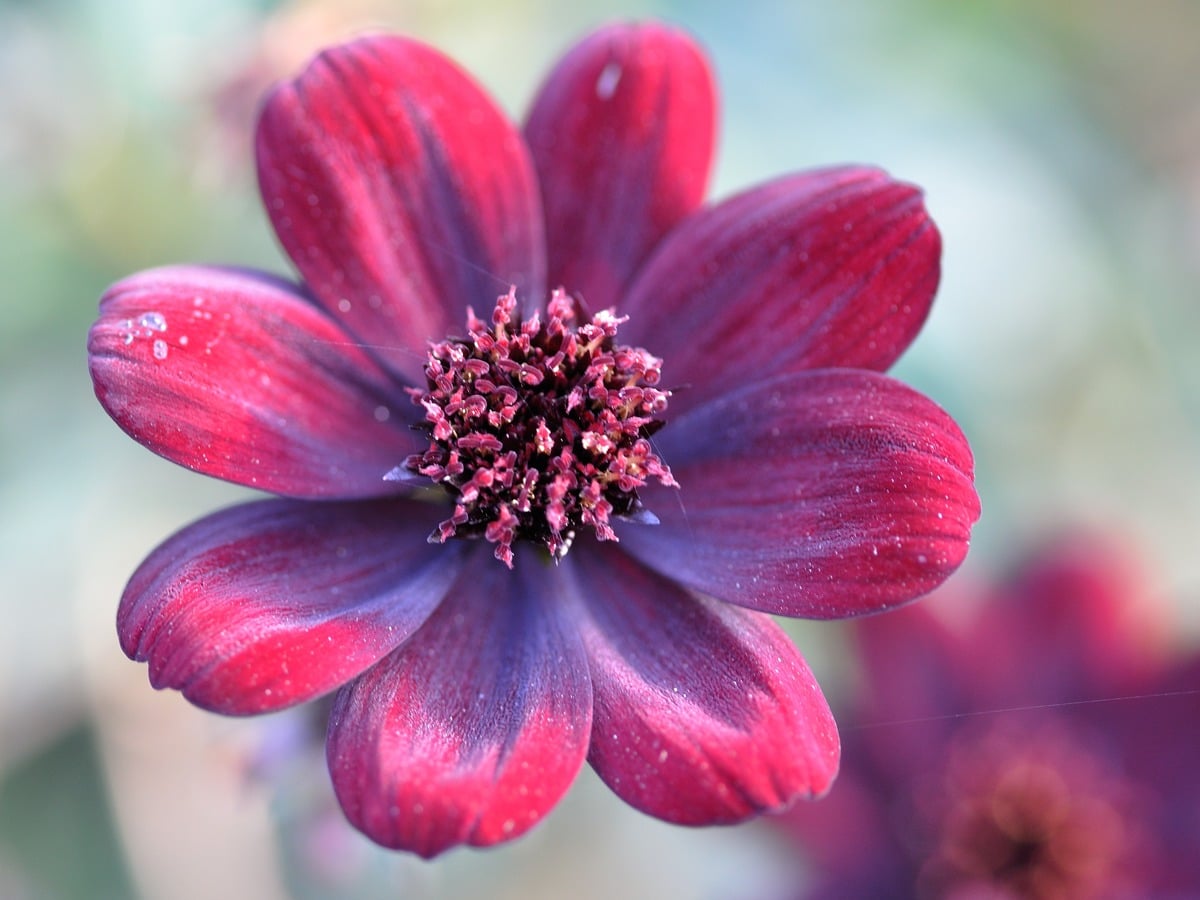
The chocolate flower is a perennial herbaceous plant whose scientific name is Cosmos atrosanguineus. It grows between 40 and 60 centimeters in height, and its flowers are really beautiful. They measure between 3 and 4,5 centimeters in diameter, and their petals are dark red to dark brown. Blooms in summer.
It needs sun or semi-shade and moderate watering, avoiding waterlogging. It does not resist frost.
Lily of the valley
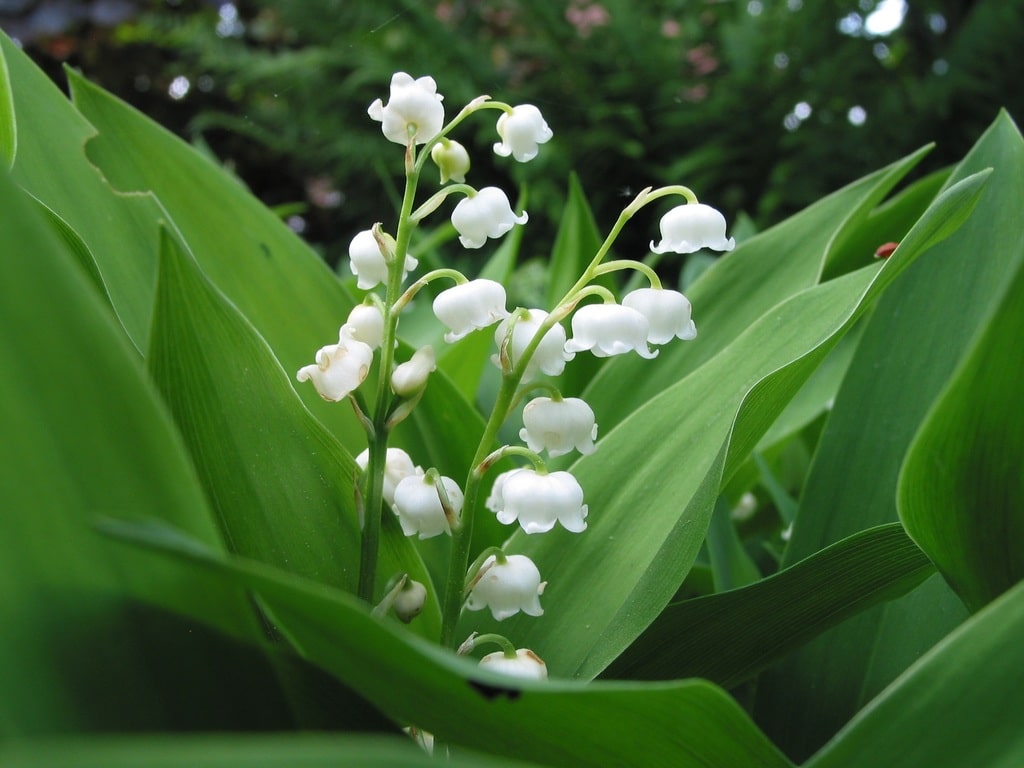
The lily of the valley is a perennial herbaceous plant whose scientific name is Convallaria majalis. It reaches 15-30 centimeters in height, and its clustered white flowers sprout in late winter.
You need protection from the sun, and moderate watering. Vegeta better in cool-temperate climates than in warm ones. It resists frosts down to -15ºC.
Cow leg
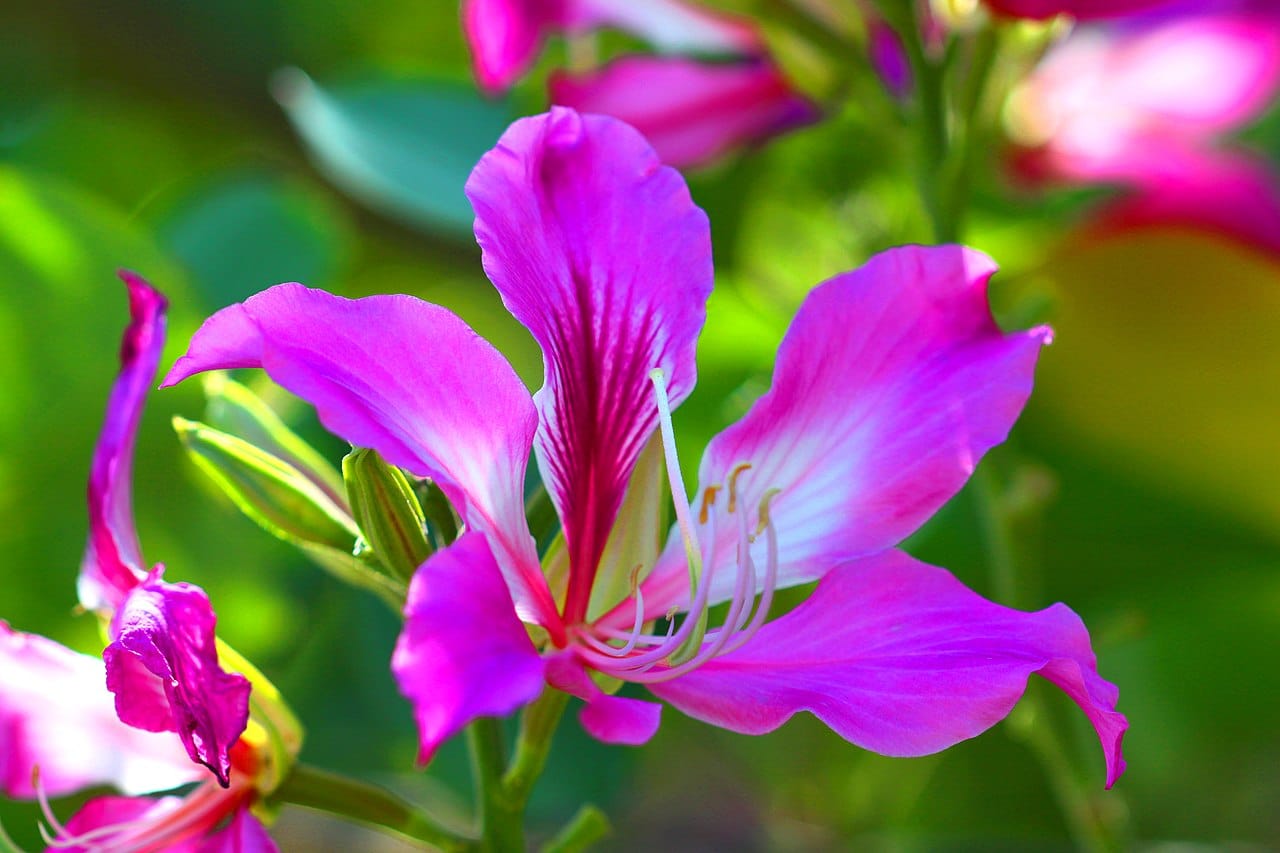
Image - Wikimedia / PEAK99
The cow's foot, also called a stick orchid or deer helmet, is a deciduous tree or small tree whose scientific name is bauhinia purpurea. Its maximum height is 10 meters, but the normal thing is that it does not grow more than 5-6. Blooms in spring, producing large purple flowers.
It does not take up much space, so it is interesting for all types of gardens as long as the climate is warm or warm-temperate. It has to be put in a sunny exposure, and water moderately. Resists up to -7ºC.
China rose
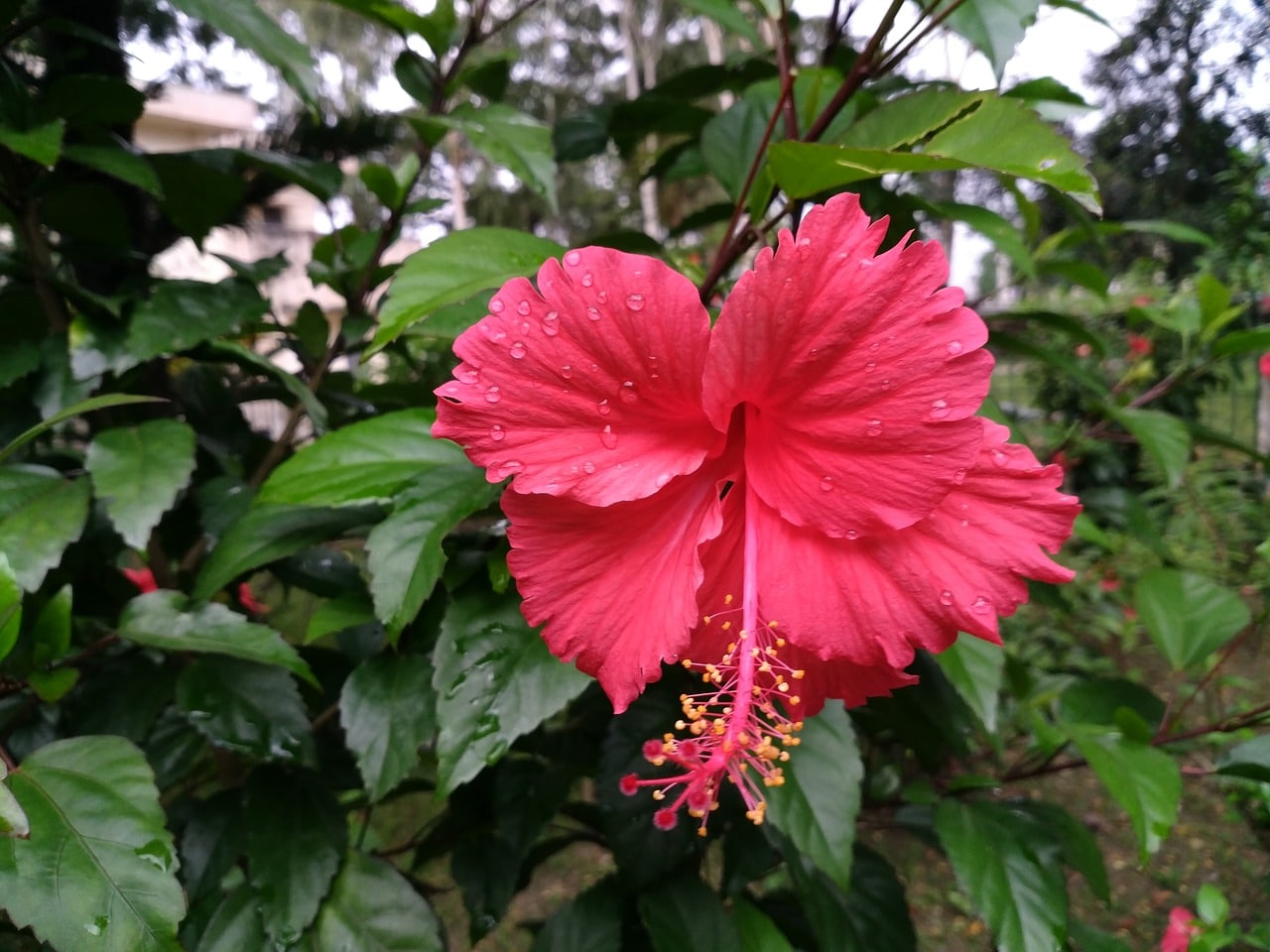
The Chinese pink hibiscus, also known as cayenne, poppy or hibiscus, is an evergreen shrub whose scientific name is Hibiscus rosa-sinensis. It grows little, between 2 and 5 meters high, and its flowers bloom from spring to late summer. There is a wide variety of cultivars and hybrids, with flowers that can be white, yellow, orange, red, or bicolor; with single flowers or with double petals.
When it comes to cultivating it, it must be taken into account that it grows both in full sun and in semi-shade, and that it needs moderate watering as it does not resist drought. It resists weak frosts down to -2ºC, perhaps -3ºC if it is a little protected.
rudbeckia
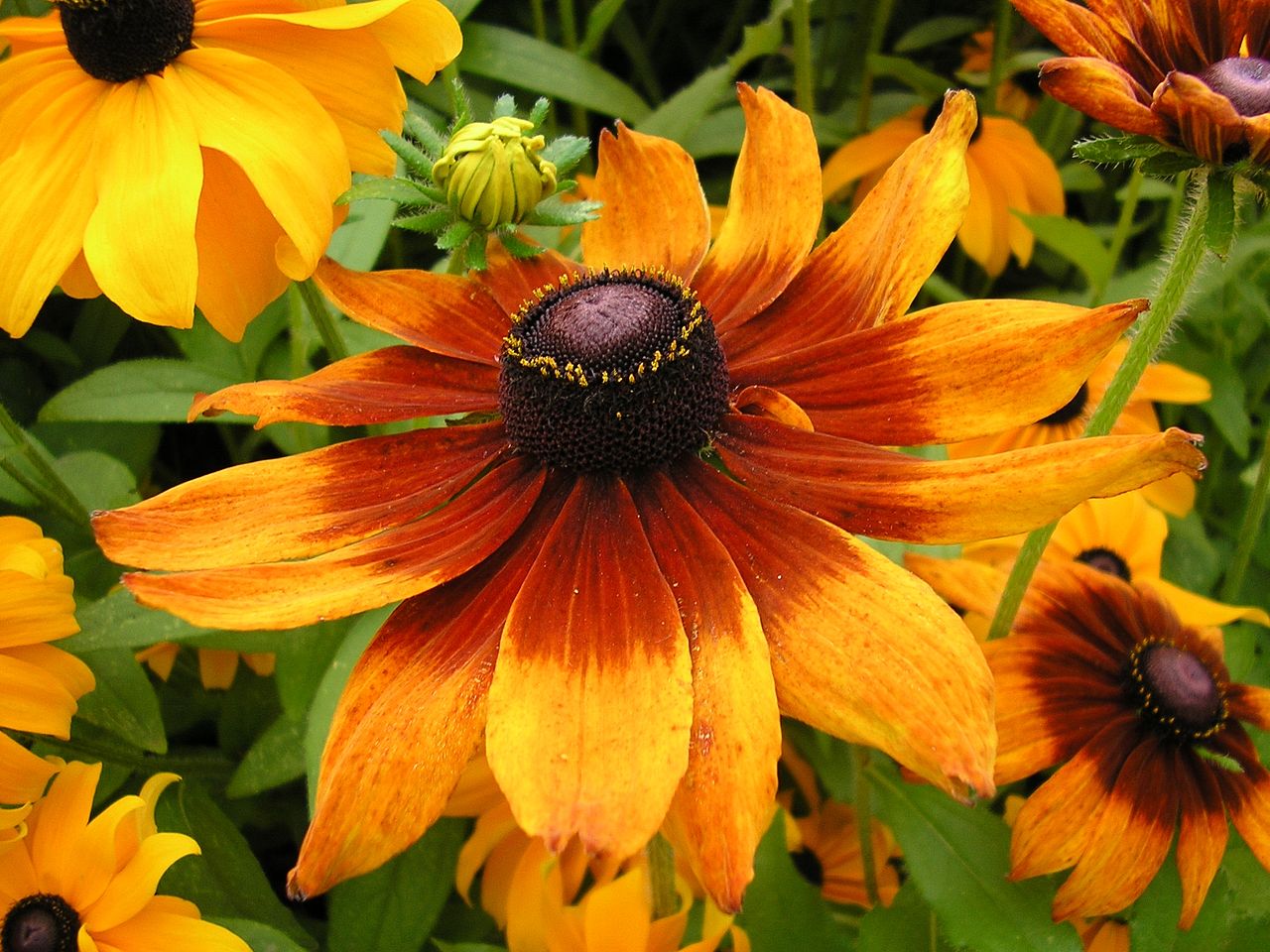
Image - Wikimedia / Überraschungsbilder
Rudbeckia is a perennial herb whose scientific name is two-tone rudbeckia. It is quite large, as it can reach 1,6 meters in height, and blooms through summer and into mid-fall. Its flowers are daisy-shaped, with reddish-yellow petals.
To grow healthy, it must be kept in a sunny position. Irrigation will be moderate, frequent in summer and scarcer in winter. Resists cold and frost down to -7ºC.
What do you think of these flowers? Which one did you like the most?
The cherry blossom, for example, requires direct exposure to the sun and tolerates any type of soil, as long as it is fresh and fertile.
The cherry tree does not need to be pruned, unless old or stray branches have to be removed. Pruning should be done in the fall before leaf fall. It is normally light in the
trees, it is limited to thinning and trimming. It reproduces by woody cutting or grafting. We highlight its leaves, bronze at first and dark green later, and its white or pink flowers.